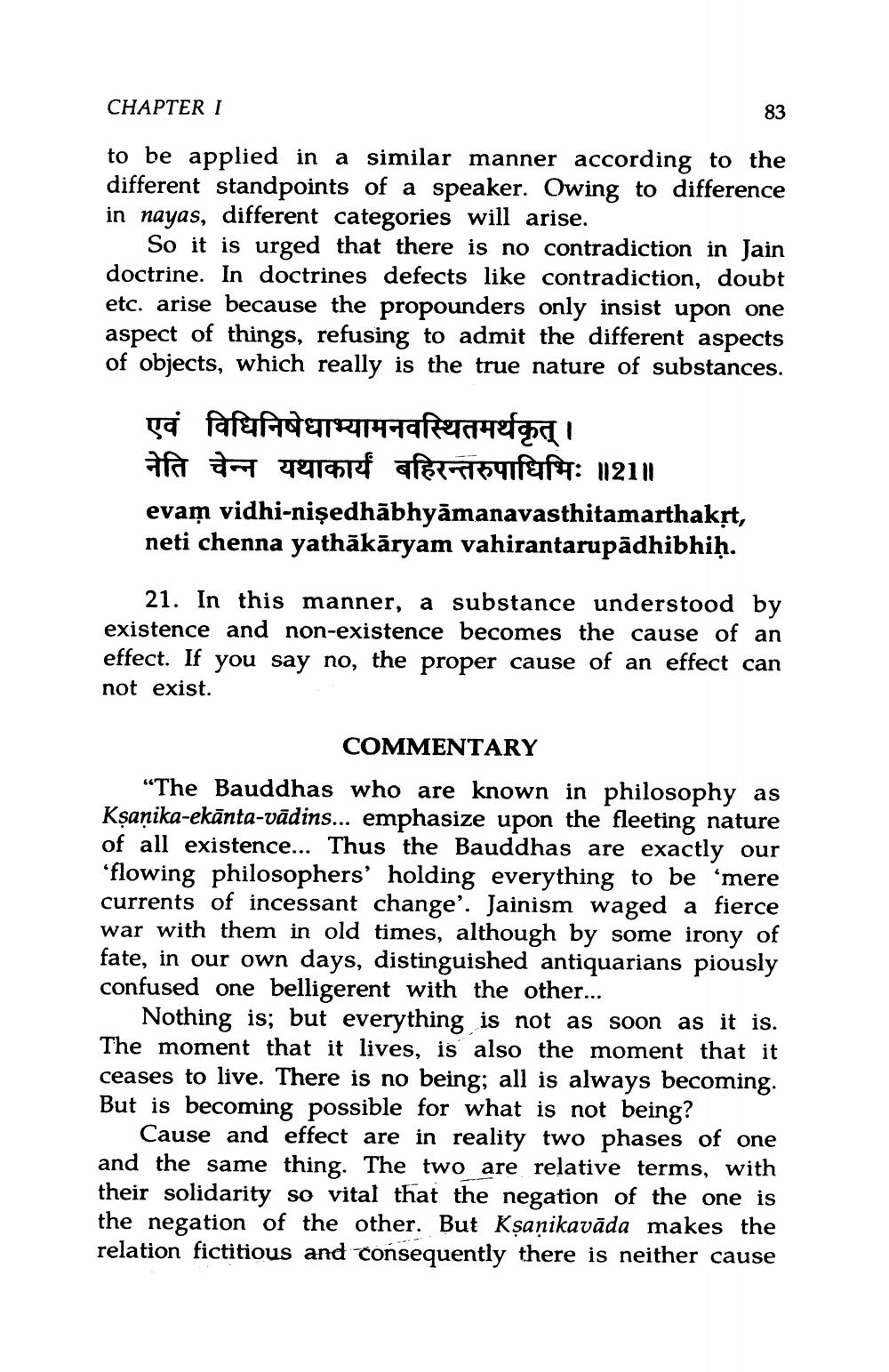________________
CHAPTER 1
to be applied in a similar manner according to the different standpoints of a speaker. Owing to difference in nayas, different categories will arise.
So it is urged that there is no contradiction in Jain doctrine. In doctrines defects like contradiction, doubt etc. arise because the propounders only insist upon one aspect of things, refusing to admit the different aspects of objects, which really is the true nature of substances.
112111
एवं विधिनिषेधाभ्यामनवस्थितमर्थकृत् । नेति चेन्न यथाकार्य बहिरन्तरुपाधिभिः ॥21॥ evam vidhi-nişedhābhyāmanavasthitamarthakrt, neti chenna yathākāryam vahirantarupādhibhiḥ.
21. In this manner, a substance understood by existence and non-existence becomes the cause of an effect. If you say no, the proper cause of an effect can not exist.
COMMENTARY “The Bauddhas who are known in philosophy as Kșaņika-ekānta-vādins... emphasize upon the fleeting nature of all existence... Thus the Bauddhas are exactly our 'flowing philosophers' holding everything to be ‘mere currents of incessant change'. Jainism waged a fierce war with them in old times, although by some irony of fate, in our own days, distinguished antiquarians piously confused one belligerent with the other...
Nothing is; but everything is not as soon as it is. The moment that it lives, is also the moment that it ceases to live. There is no being; all is always becoming. But is becoming possible for what is not being?
Cause and effect are in reality two phases of one and the same thing. The two are relative terms, with their solidarity so vital that the negation of the one is the negation of the other. But Kșanikavāda makes the relation fictitious and consequently there is neither cause




